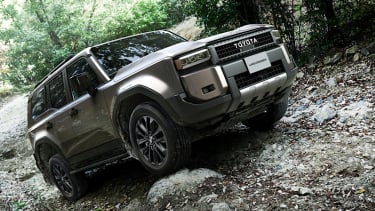- VIVAnews/Dokumentasi KBRI Praha
Twenty-two Komodo dragons have hatched at the Los Angeles Zoo this month, giving a modest boost to the world's endangered population.
The zoo's adult female Komodo, Lima, laid the eggs on Jan. 22. The first one popped through its soft-sided egg shell on Aug. 8 and hatchlings kept coming for two weeks.
Komodos are the world's largest lizards and are popular attractions at zoos from the United States to Europe. All 2,500 left in the wild can be found at the 700-square-mile Komodo National Park in Indonesia.
Komodos are cannibalistic and usually eat their young and eggs of their own species, so zoo officials say staying alive is tricky for a hatchling.
This is the first time the Los Angeles Zoo has succeeded at a breeding attempt. It joins fewer than 10 other zoos in North America that have made it work.
Eleven babies will eventually go to the Columbus Zoo in Ohio and the others will go to zoos assigned by the Species Survival Program, curator Ian Recchio said Thursday. Los Angeles will just keep Lima and the adult male, Buru.
It is exciting to know "the hatchlings from this clutch will go on to help ensure the survival of the species," Recchio said.
Hatchlings are 14 to 20 inches long and weigh around 3 ounces, but they will grow to about 9 feet and can weigh 200 pounds or more. Males tend to be slightly larger than females and sometimes have yellow spots on their snouts but are otherwise gray.
They have about 60 needle-like teeth that will grow back quickly if one falls out. They will cut their prey into sections and then swallow without chewing. They drink rarely, getting their fluids from the food they eat.
There are no Komodos on display at the zoo now, but before the offspring all leave Los Angeles, some of them will be shown at the Winnick Family Children's Zoo.
In the wild, a young Komodo will sprint up the nearest tree to avoid being eaten by adults. They will stay in the trees and eat insects and other lizards until they get too heavy for the tree. By then, they will have developed enough to protect themselves from adult Komodos on the ground.
Komodo dragons in the wild eat 80 percent of their weight and then go without food for several weeks. They will eat snakes, other lizards, reptile and bird eggs, carrion, deer, pigs, goats and dogs. They will even try to eat larger animals, like horses and water buffalo.
The dragons are probably best known for their venomous saliva. It is naturally harmless, but picks up deadly pathogens because of the food they eat, Recchio said. The Komodos are immune to the bacteria, but the animals or humans in their path can be in nearly instant trouble.
The animals are believed to have descended from a larger lizard on Indonesia's main island Java or Australia around 30,000 years ago.
--
By Sue Manning
Associated Press Writer

























